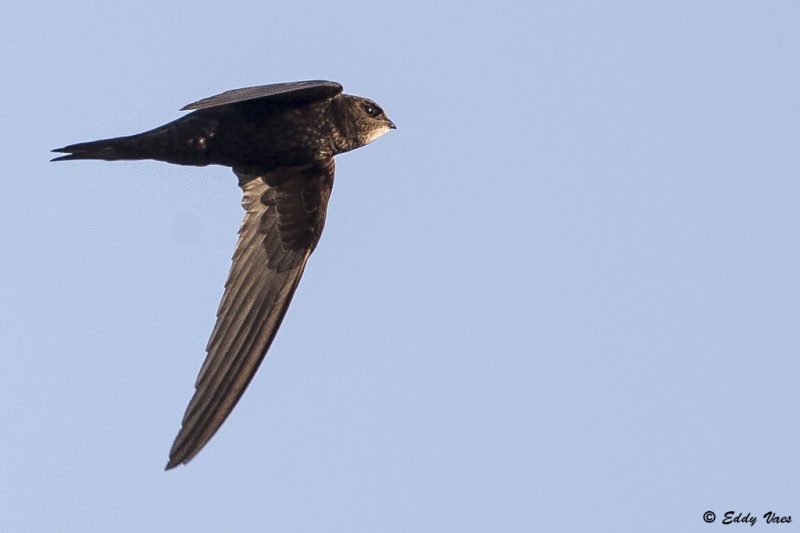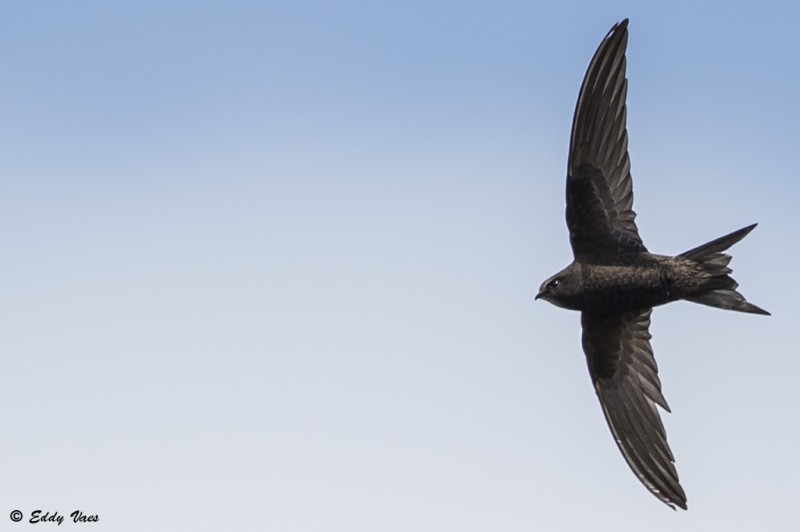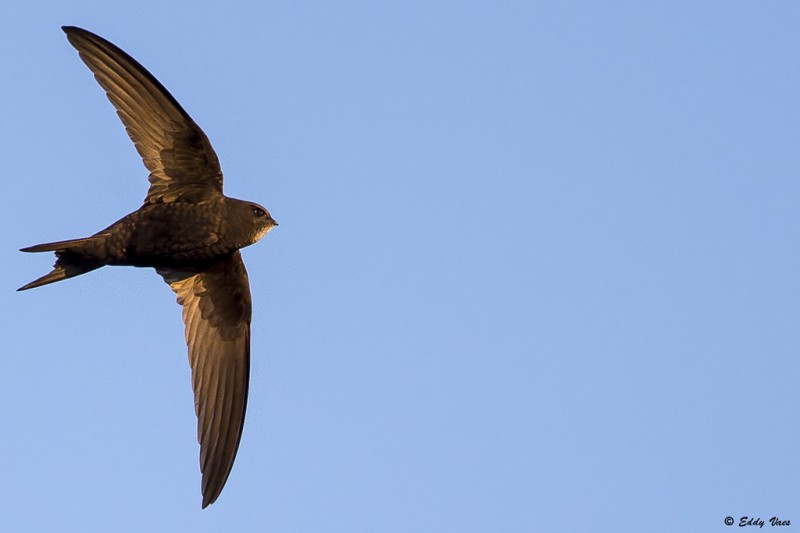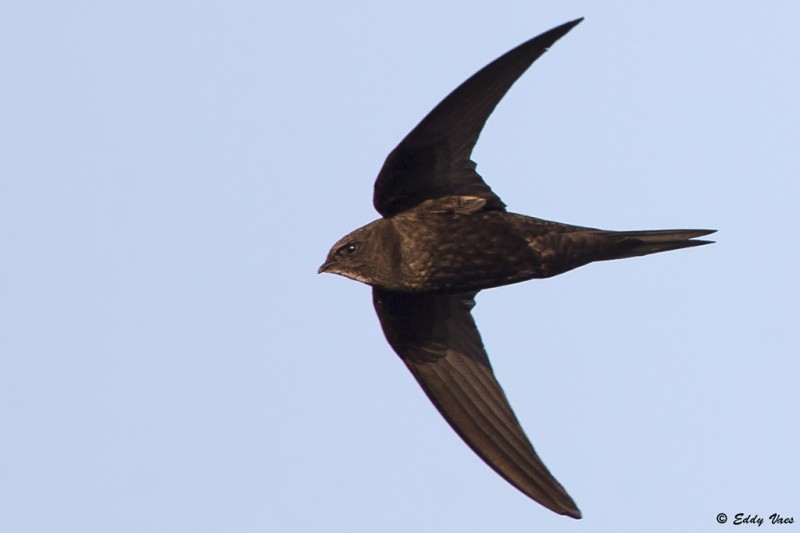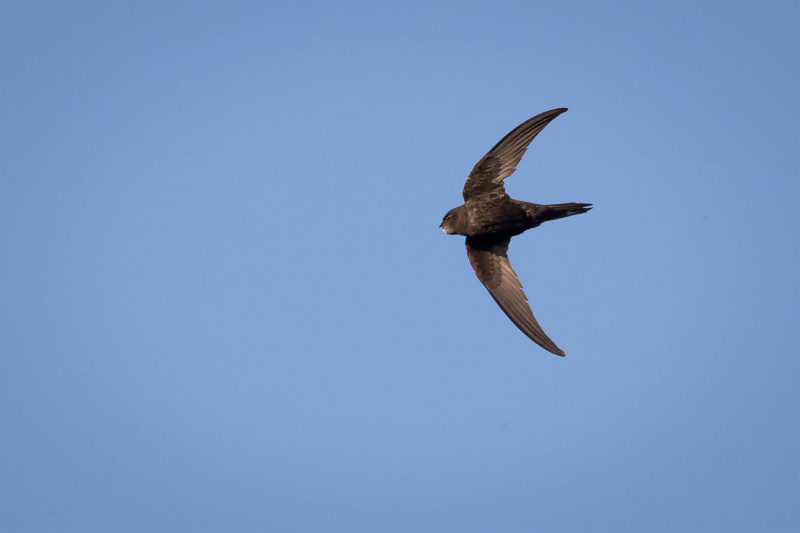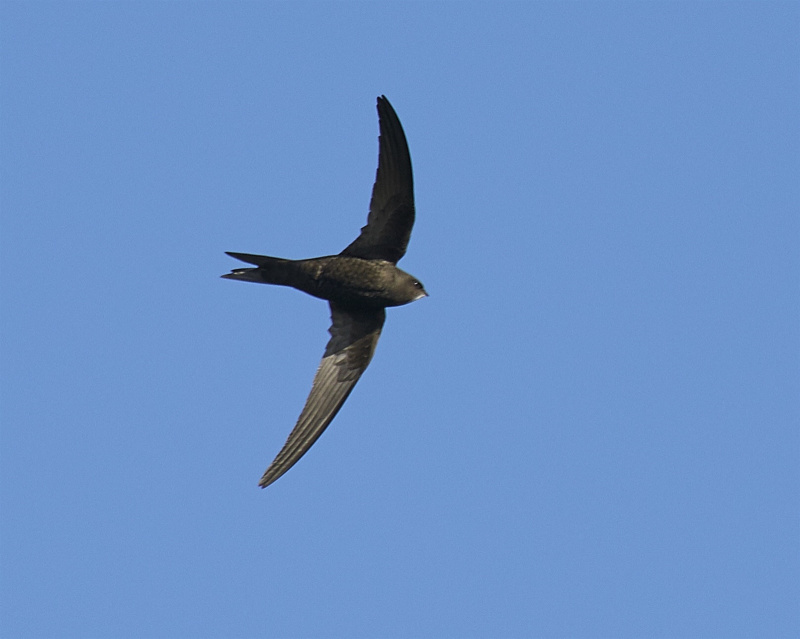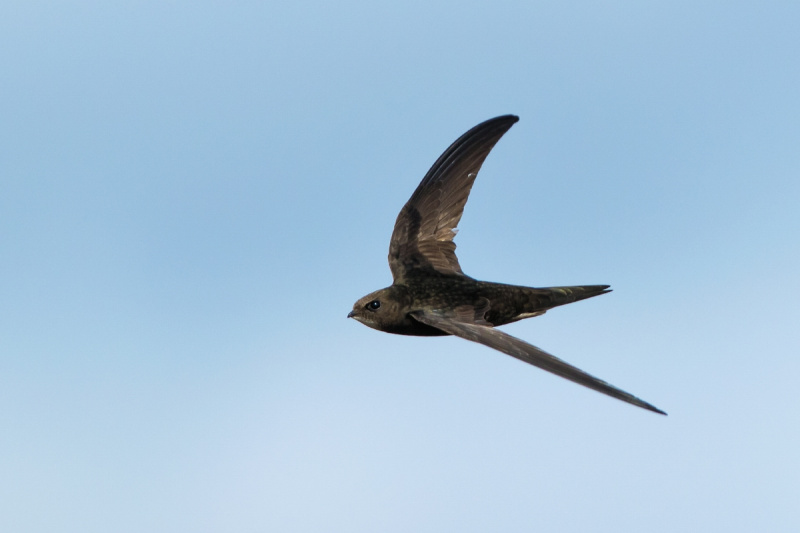Baillon's Crake (Zapornia pusilla)
Swift (Apus apus)
Most likely to be confused with Little Crake (P. parva). Most important field characters is the very short primary projection and lack of red base of bill. Some caution should be taken as missing or unorderly tertials can be confusing with regards to the projection, and immature Little Crake may sometimes also lack red base of bill. Flanks and belly more extensively barred than P. parva. Upperparts richer brown with white spots. Sexes alike, but females often with paler throat. Brown cheeks occurs in both sexes. Legs dirty olive colour and bill greenish. Immature even more easily confused with P. parva, but apart from the missing projection, note warmer brown upperparts and more heavily barred underparts, even on breast. Crown less evenly coloured than P. parva, with blackish speckles.
Sound:Rich repertiore. Male song easily overlooked due to similarity to The edible frog Pelophylax esculentus., and to being audible only a few hundred meters. The sound, a rolling "trrrrrrrr", differs from frogs in being drier and more stable in pitch. Sometimes the pitch rises slightly in the beginning of the call, but then remains stable also at the end. The call is uttered in 1-2 seconds intervals and each call is 2-3 seconds long. Some overtone modulation is common (stable pitch but change of vocal "ooeeii"). Unmated female sings with a more hurried "wirrr". Alarm call a series of nasal, hoarse "weeat" or a sharp "kriik".
Male song:
Distribution:
Wikipedia: map (se also Xeno-canto below)
Ecology:Birdlife ecology
Links:
Observation.org Latest observations
Image search Flickr NB! May give other species
CCCC-sound:Edmunds Racinskis, Licence,Link.
CC-photo:Peter Jacobs Photos, Licence,Link.
CC-photo:gilgit2, Licence,Link.
All black swift with small white throat patch. Very difficult to separate from Pallid swift and Plain Swift. Pallid Swift; brownish plumage tone (best seen against darker background), bigger throat-patch than swift, scale pattern on body more prominent, wing-tips slightly rounded, "saddle" darker than wings, and more contrast between darker outer primaries and inner. Plain Swift; throat patch smaller and more diffuse than swift, wings and body more slender, tail noticeably deeper forked.
Sound:A shrilling trill "zreeeee" of about 1 -2 seconds length, gradually rising in pitch with accentuated firs half, then falling from the middle of phrase. Often continued with a dry lower pitched "trrrrrr" before calling again. Very vocal at breeding area, and often a flock will call together. Despite being quite similar to Pallid Swift, the call is probably the best field character to separate the two. Pallid puts the stress on the ending of the call, followed by a quick fall in pitch (dynamics like moaning with a quick release). Plain Swift calls similar to Common Swift, but differs in slightly fluctuating pitch during the call, and a loss of resonance towards the ending (thinner sounding).
Song/contact call:
Distribution:
Wikipedia: map (se also Xeno-canto below)
Ecology:Birdlife ecology
Links:
Observation.org Latest observations
Image search Flickr NB! May give other species
CC
 English
English Albanian
Albanian
 Armenian
Armenian
 Bulgarian
Bulgarian
 Catalan
Catalan
 Croatian
Croatian
 Czech
Czech
 Danish
Danish
 Dutch
Dutch
 Finnish
Finnish
 French
French
 Georgian
Georgian
 German
German
 Greek
Greek
 Hungarian
Hungarian
 Italian
Italian
 Latvian
Latvian
 Lithuanian
Lithuanian
 Macedonian
Macedonian
 Norwegian
Norwegian
 Polish
Polish
 Portuguese
Portuguese
 Romanian
Romanian
 Russian
Russian
 Sami : Lule sami
Sami : Lule sami
 Sami : North sami
Sami : North sami
 Sami : South sami
Sami : South sami
 Scientific names
Scientific names
 Serbian
Serbian
 Spanish
Spanish
 Swedish
Swedish
 Ukrainian
Ukrainian








